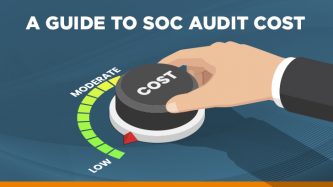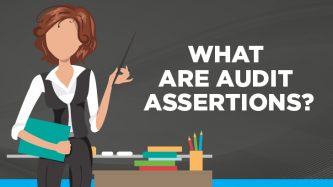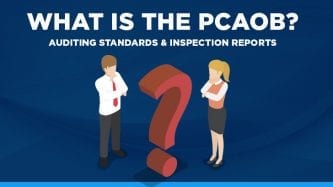There is one question on everyone’s mind when they learn that they need to get a SOC report for one of their clients… How much is this going to cost? Chances are, if you are reading this, then you have the same question. The bottom line is, SOC audit costs vary, but audits typically range […]
Isaac Clarke (Partner | CPA, CISA, CISSP)
Isaac Clarke is a partner at Linford & Co., LLP. He began his career with Ernst & Young in 2003 where he developed his audit expertise over a number of years. Isaac specializes in and has conducted numerous SOC 1 and SOC 2 examinations for a variety of companies—from startups to Fortune 100 companies. Isaac enjoys helping his clients understand and simplify their compliance activities. He is attentive to his clients’ needs and works meticulously to ensure that each examination and report meets professional standards.
What is an Assertion? How Audit Assertions Relate to SOC Reports
The Oxford dictionary defines an assertion as “a confident and forceful statement of fact or belief.” Making an assertion is often used synonymously with stating an opinion or making a claim. While assertions are made in all aspects of life, most people think of a company’s financial statements or the financial statements audit when they think of assertions in an accounting or business setting.
SOC 2 + HITRUST®: How Your Organization Could Benefit From Both
Cybersecurity is a serious concern for the management and board members of organizations around the world. Consequently, service providers are being faced with increasing scrutiny and pressure to prove that they have taken appropriate measures to protect their systems, the client data that they process or store, and the systems and entities who use or […]
Establishing an Effective Internal Control Environment
Organizations flourish when they establish environments that foster the efficient execution of operations. Internal controls should help organizations deliver value to their stakeholders and achieve their strategic objectives while aligning with industry best practices, laws, and regulations to manage risks facing them. What Is the Control Environment of a Company? The Institute of Internal Auditors control environment definition states that the […]
What is the PCAOB? Auditing Standards & Inspection Reports
The Public Company Accounting Oversight Board (PCAOB) is a regulatory board reporting to the SEC who oversees the audits of public companies. Congress created the PCAOB in 2002 with the Sarbanes-Oxley Act (SOX) in response to a series of accounting scandals, notably Enron and Worldcom, to tighten controls on the auditing industry.
There is No SOC 1 Audit Checklist…Only Questions & Considerations
You have poured your blood, sweat, and tears in to your startup and it is about to pay off. You are close to finalizing a deal with a new, large customer. You have worked long and hard to connect with them and demonstrate the value of your service or system. They are excited. You are […]
Testing & Audit Exceptions
If you are reading this article, chances are that your auditor has told you that you have an audit exception or, even worse, multiple “audit exceptions.” Hearing that phrase strikes fear and panic into the hearts of many. While some of those reactions may be justified, I have found that many suffer more than necessary […]
What Is ISO 9000?
The International Organization for Standardization (ISO) is an independent, non-governmental organization made up of members from the national standards bodies of over 160 countries that set international standards related to products and services.
Understanding an Audit Letter of Representation (LOR)
This article addresses the what, when, why, and who’s related to letters of representation for audits, specifically SOC audits. What is a Letter of Representation? A letter of representation (a.k.a., representation letter, rep. letter, LOR) in audit services is a form letter from the American Institute of Certified Public Accountants typically prepared by the external […]
The 10 Generally Accepted Privacy Principles
The ten generally accepted privacy principles that are essential to the proper protection and management of personal information are:














